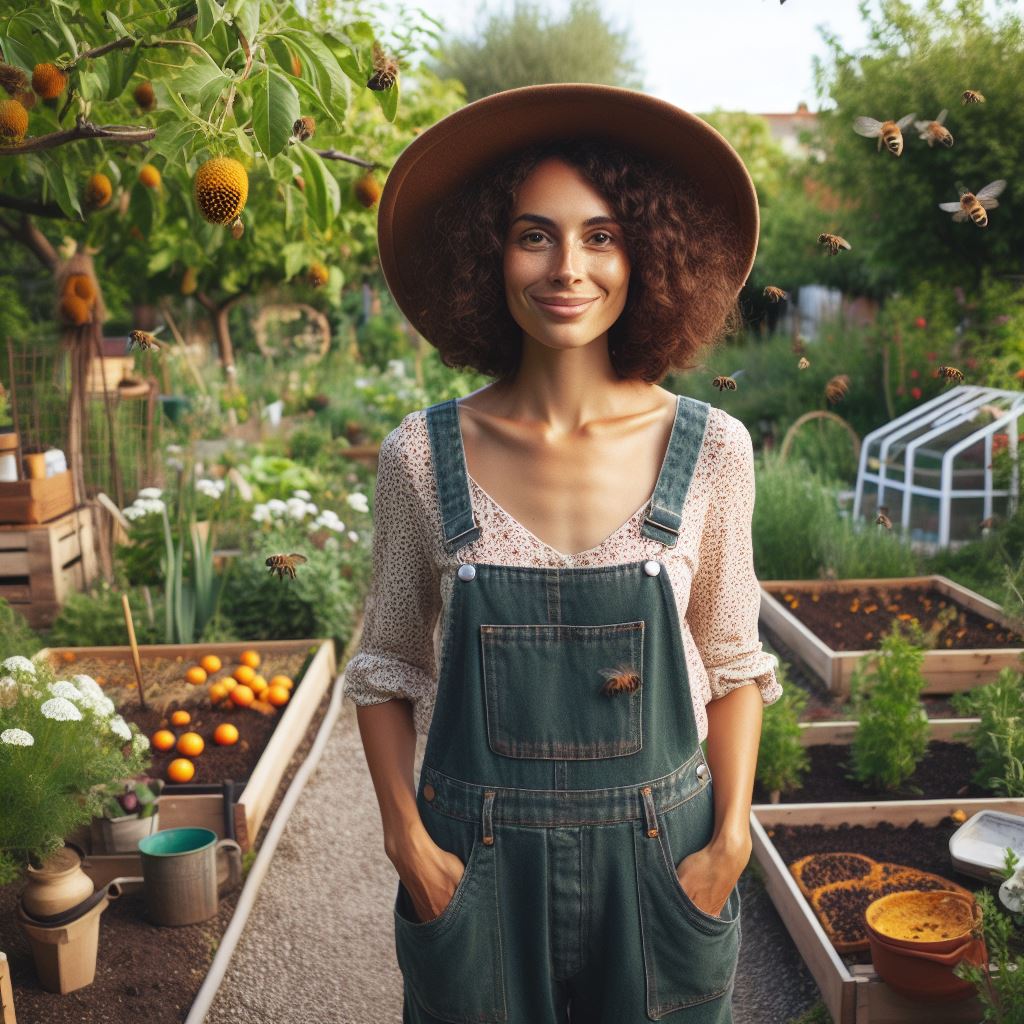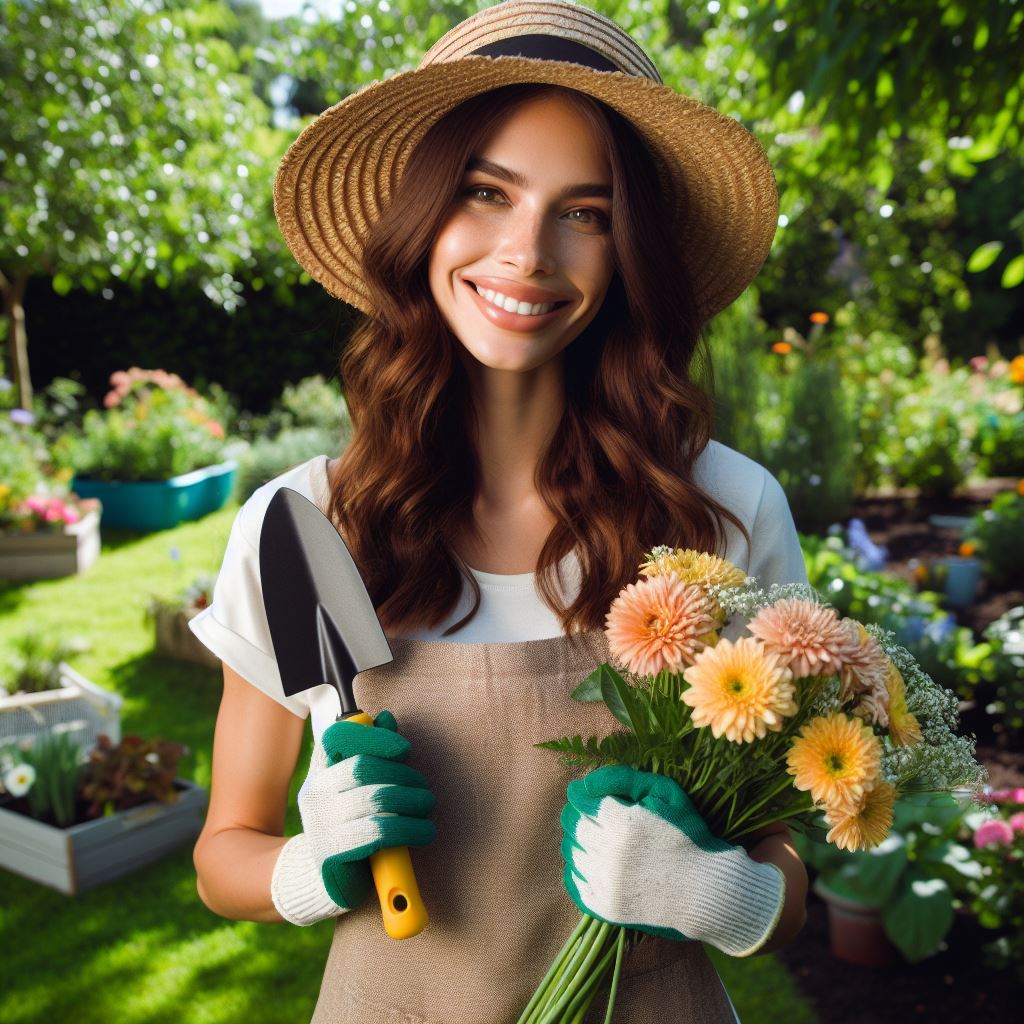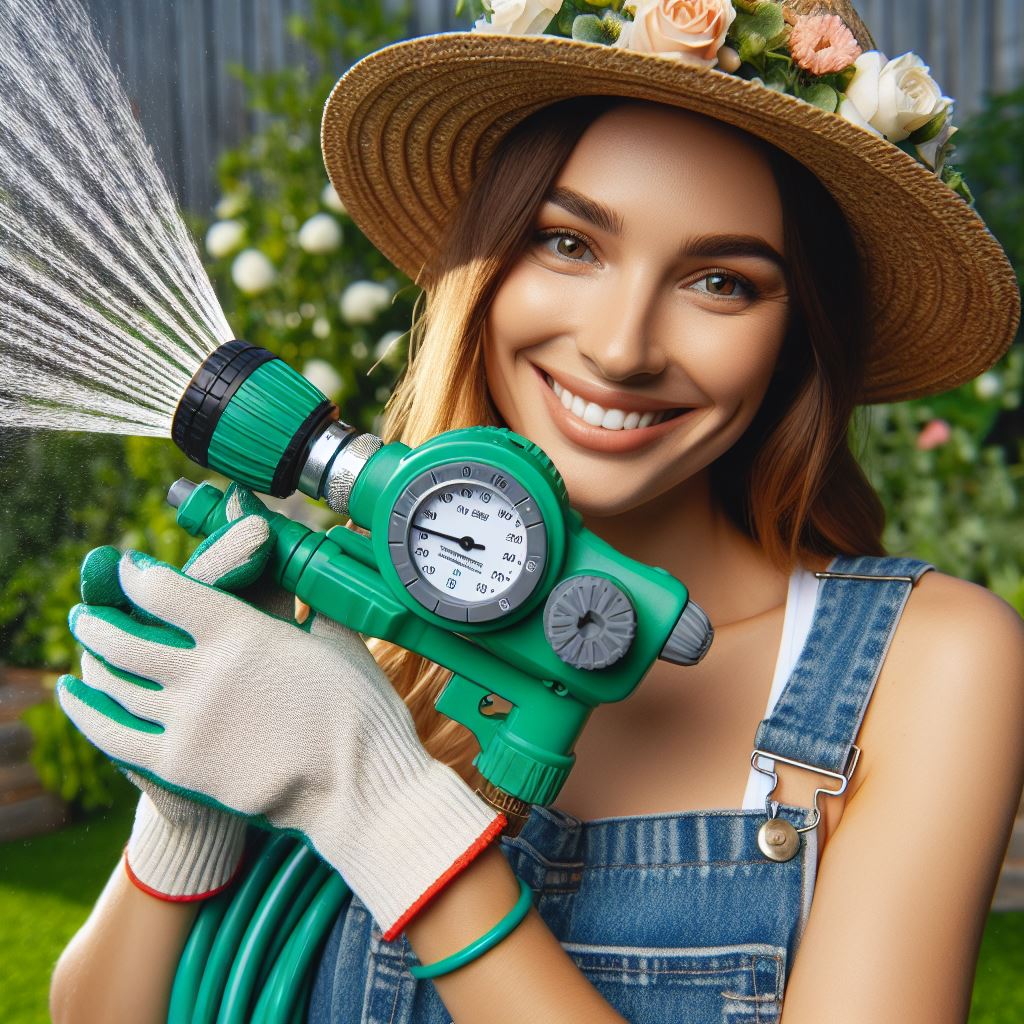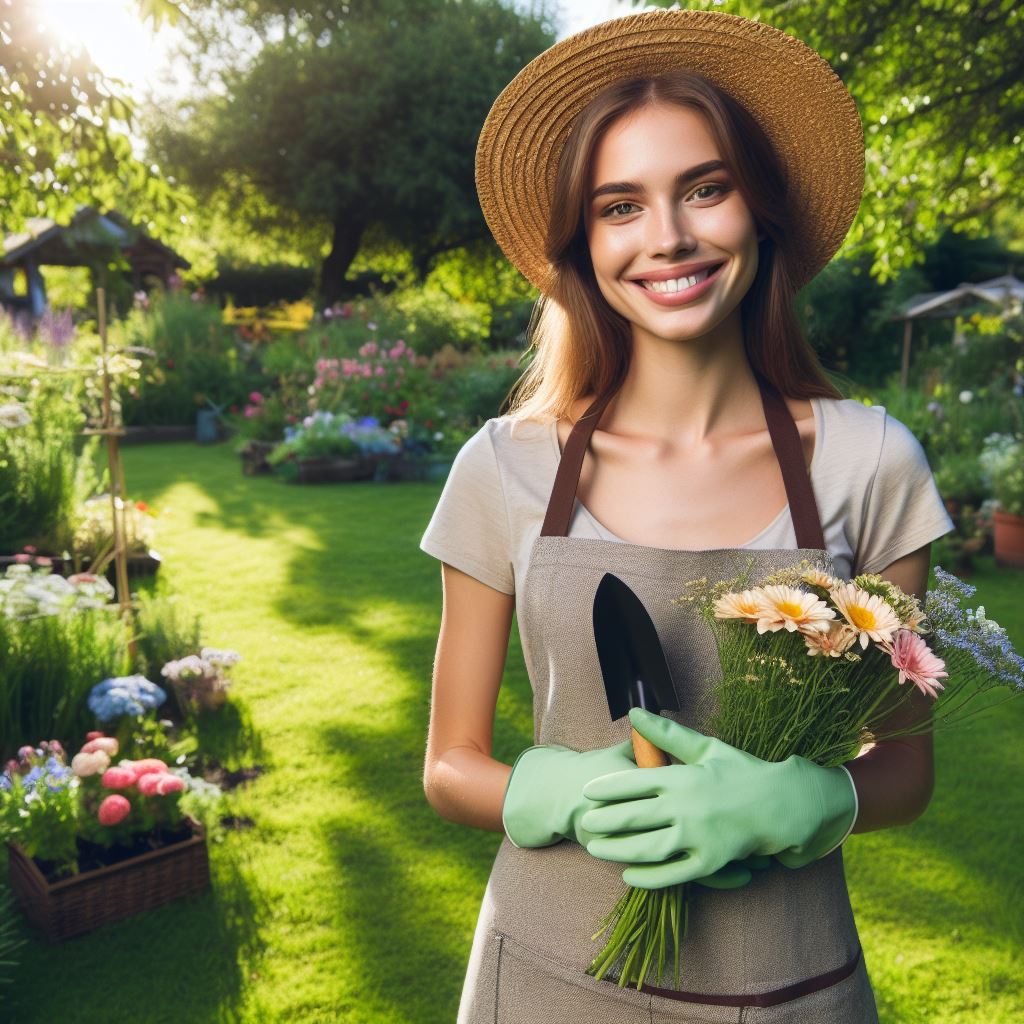Introduction
Pollinators are crucial in small gardens, promoting plant growth and biodiversity.
This blog post focuses on tips for creating pollinator-friendly small gardens.
Importance of pollinators in small gardens
Pollinators play a vital role in small gardens, ensuring successful fruit and vegetable production.
Bees, butterflies, birds, and other insects facilitate the transfer of pollen between flowers, promoting fertilization and fruit development.
By attracting and supporting pollinators through diverse plantings and pesticide-free practices, small gardeners can enhance crop yields, promote biodiversity, and contribute to overall ecosystem health and resilience.
Creating a pollinator-friendly small garden is not only beneficial for the environment but also for the overall health and beauty of your garden.
Pollinators, such as bees, butterflies, and birds, play a vital role in the pollination of plants, which leads to the production of fruits, vegetables, and seeds.
In small gardens, where space is limited, attracting these pollinators becomes even more important.
Overview of the blog post focus
In this blog post, we will provide you with essential tips to ensure your small garden is a haven for pollinators.
By following these suggestions, you can maximize your garden’s potential for pollination and create a thriving habitat for these important creatures.
Firstly, plant a variety of flowers, herbs, and shrubs that bloom at different times throughout the year.
This provides a constant food source for pollinators and extends their visiting period in your garden.
Additionally, choose native plants that are adapted to the local climate and are more likely to attract pollinators.
Secondly, provide shelter and nesting sites for pollinators.
This can be done by adding features such as bee houses, butterfly boxes, or piles of leaves and twigs.
Transform Your Agribusiness
Unlock your farm's potential with expert advice tailored to your needs. Get actionable steps that drive real results.
Get StartedThese structures offer protection and encourage pollinators to make your garden their home.
Furthermore, avoid using pesticides in your garden as they can harm pollinators.
Instead, opt for natural pest control methods, such as introducing beneficial insects or using organic pest repellents.
Lastly, provide a water source for pollinators.
A shallow dish or birdbath filled with clean water can be a great attraction for them, especially during hot summer days.
In conclusion, creating a pollinator-friendly small garden is achievable with these simple tips.
By providing a diverse range of plants, shelter, and a water source, you can attract and support the pollinators that are essential for the success of your garden.
Understanding pollinators
Definition and types of pollinators
Pollinators are animals, including insects, birds, bats, and even some mammals, that aid in the transfer of pollen from the male reproductive organ to the female reproductive organ of plants.
This process is essential for plant reproduction and the production of seeds and fruits.
Bees
Bees are one of the most important pollinators, as they are highly efficient in transferring pollen from flower to flower.
They are attracted to a wide range of flowers and are responsible for pollinating many crops.
Butterflies
Butterflies are not as efficient as bees in pollination but still play a significant role.
They are attracted to bright, colorful flowers and have a long proboscis that allows them to reach the nectar deep within the flower.
Hummingbirds
Hummingbirds are key pollinators for certain flowers, particularly those with long tubular shapes that accommodate their long beaks.
They are attracted to brightly colored flowers, especially red and orange ones.
Bats
Bats are important nocturnal pollinators, often attracted to night-blooming flowers.
They are particularly crucial for the pollination of certain fruits like bananas, mangoes, and agave plants.
Role of pollinators in plant reproduction
Pollinators are indispensable for plant reproduction, as they facilitate the transfer of pollen between flowers.
This transfer enables fertilization and the formation of seeds, ensuring the survival and genetic diversity of plant species.
Cross-pollination
Many plants require cross-pollination to transfer pollen between different individuals, promoting genetic variation and enhancing the vigor of the offspring.
Pollinators play a vital role in facilitating cross-pollination.
Self-pollination
In some cases, plants can self-pollinate, meaning that they can transfer pollen from the male to the female reproductive organs within the same flower or even within the same plant.
However, cross-pollination generally results in stronger and more resilient offspring.
Benefits of attracting pollinators to small gardens
Creating a pollinator-friendly garden can bring numerous benefits, both for the environment and the garden itself.
Showcase Your Farming Business
Publish your professional farming services profile on our blog for a one-time fee of $200 and reach a dedicated audience of farmers and agribusiness owners.
Publish Your ProfileEnhancing biodiversity
By attracting a variety of pollinators, small gardens contribute to the overall biodiversity of the area.
This, in turn, helps maintain a balanced and healthy ecosystem.
Improved crop yields
Pollinators, particularly bees, are crucial for the pollination of many crops.
Having pollinator-friendly gardens nearby can increase crop yields and promote better fruit and seed production.
Beauty and aesthetics
Pollinator-friendly gardens are often colorful and blooming with vibrant flowers.
They add beauty and visual appeal to any small garden, creating a tranquil and inviting space.
Educational opportunities
Small gardens that attract pollinators can serve as educational resources.
They provide a chance to learn about the fascinating world of pollinators and their role in plant reproduction.
In conclusion, understanding pollinators is essential for creating pollinator-friendly small gardens.
Knowing the definition and types of pollinators, as well as their role in plant reproduction, can help gardeners design spaces that attract these beneficial creatures.
The benefits of attracting pollinators to small gardens are extensive, from enhancing biodiversity to improving crop yields and providing educational opportunities.
By implementing strategies to attract and support pollinators, gardeners can create beautiful and thriving spaces that contribute to a healthier ecosystem.
Read: Easy Composting for Beginners: A Step-by-Step Guide
Creating a pollinator-friendly garden
Creating a garden that welcomes and supports pollinators is not only beneficial for the environment but also a rewarding experience for gardeners.
By following these tips, you can create a pollinator-friendly garden that attracts a variety of important pollinators like bees, butterflies, and hummingbirds.
Selecting native plants that attract pollinators
Researching native floral species plays a crucial role in selecting the right plants for a pollinator-friendly garden.
Native plants have co-evolved with local pollinators, making them ideal food sources.
Look for plants that are known to attract bees, butterflies, and other pollinators.
Choose a variety of flowering plants with different bloom times to ensure a continuous supply of nectar and pollen throughout the growing season.
This provides a consistent food source for the pollinators visiting your garden.
Providing diverse habitats for pollinators
Creating a diverse habitat within your garden is essential for attracting and supporting pollinators.
Incorporate water sources like birdbaths or shallow dishes filled with clean water.
These water sources will provide a place for pollinators to drink and cool off.
Additionally, consider adding features like rocks or pebbles to provide a landing spot for butterflies or bees.
To provide shelter and nesting sites, include dense shrubs and bushes where pollinators can find refuge from extreme weather and predators. Installing birdhouses, bee boxes, or insect hotels will provide additional nesting opportunities.
Different pollinators have different nesting requirements, so incorporating a variety of structures will attract a diverse group of pollinators to your garden.
Avoiding harmful chemicals and pesticides
Using harmful chemicals and pesticides in your garden can be detrimental to pollinators as they can kill or harm these important creatures.
Chemical pesticides can contaminate nectar and pollen, making them toxic for pollinators.
It is crucial to be aware of the potential harm these chemicals can have on pollinators and their ecosystems.
Instead of relying on chemical pesticides, choose organic pest control methods.
Companion planting, where certain plants naturally repel pests, can help keep your garden pest-free.
Introduce beneficial insects like ladybugs or lacewings, which are natural predators of garden pests.
By embracing these organic methods, you can protect pollinators while promoting a healthy and vibrant garden.
In conclusion, creating a pollinator-friendly garden involves selecting native plants that attract pollinators, providing diverse habitats, and avoiding harmful chemicals.
By implementing these practices, you can play a vital role in conserving pollinators and fostering a thriving ecosystem right in your own backyard.
Read: Urban Farming 101: Maximizing Your Small Space
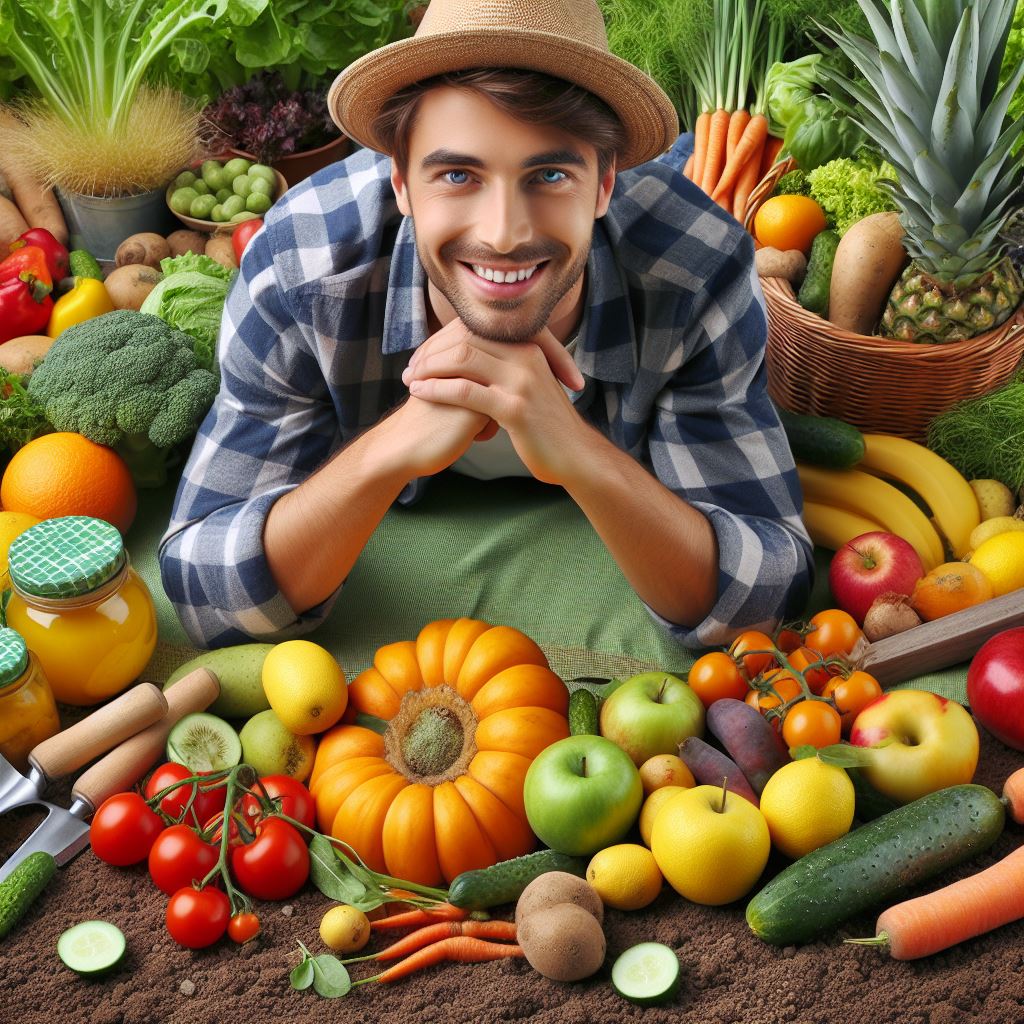
Find Out More: Backyard Berry Bonanza: Growing Guide
Planting and maintaining a pollinator-friendly garden
Creating a pollinator-friendly garden involves careful planning, proper planting techniques, and providing the right maintenance and care.
By considering the following guidelines, you can contribute to the well-being of pollinators and create a vibrant and thriving garden.
Designing a garden with continuous blooming
Designing a garden with continuous blooming is essential to ensure a consistent food source for pollinators.
Showcase Your Farming Business
Publish your professional farming services profile on our blog for a one-time fee of $200 and reach a dedicated audience of farmers and agribusiness owners.
Publish Your ProfileBy choosing plants with varying flowering times, you can provide nectar and pollen throughout the growing season.
Consider incorporating early-blooming plants such as crocuses and snowdrops, mid-season bloomers like coneflowers and black-eyed Susans, and late-season flowers such as asters and goldenrods.
This way, you cater to the needs of pollinators all year long.
Planning for seasonal changes is equally important.
As the seasons change, the availability of blooming plants fluctuates.
Ensure your garden has plants that bloom during different seasons, allowing pollinators to find food and shelter regardless of the time of year.
For example, spring-flowering bulbs like tulips and daffodils provide early-season nourishment, while perennials like bee balm and butterfly weed offer sustenance during the summer months.
Late-season flowers like sedum and sunflowers can supply vital resources in the fall.
Proper planting techniques and spacing
Proper planting techniques and spacing are crucial for the successful establishment of a pollinator-friendly garden.
Prepare the soil by removing weeds and adding compost or organic matter to improve its fertility and drainage.
This will create a favorable environment for both plants and pollinators.
Adhere to planting depth and spacing guidelines to allow adequate airflow and sunlight penetration, preventing diseases and ensuring optimal growth.
Providing appropriate maintenance and care
Providing appropriate maintenance and care is vital for the well-being of both your garden and the pollinators it attracts.
Regular watering is essential to keep the soil moist, as it is necessary for many pollinators’ survival.
However, be cautious not to overwater, as excessive moisture can be harmful.
Fertilize your plants with organic options to provide essential nutrients without negatively impacting pollinators.
Regularly monitor for pests and diseases and address them using environmentally friendly methods.
Finally, weed regularly to eliminate competition for resources and promote a healthy ecosystem.
By incorporating these practices into your gardening routine, you can create a pollinator-friendly small garden that supports a diversity of beneficial insects and wildlife.
Remember that even small spaces can make a significant impact on pollinator conservation.
Enjoy the beauty of your garden while playing a vital role in protecting our essential pollinators.
Happy gardening!
Read: Soil Health Secrets: Tips for Nutrient-Rich Soil
Additional tips for enhancing pollinator attraction
Creating a garden that is attractive to pollinators doesn’t end with selecting the right plants.
There are additional steps you can take to enhance pollinator attraction and contribute to their conservation efforts.
Incorporating plants with specific pollinator-attracting characteristics
When choosing plants for your garden, consider their specific characteristics that can attract pollinators.
Fragrant flowers, for example, are known to be highly attractive to butterflies and moths.
The sweet scent emitted by these flowers acts as a powerful lure for these flying visitors.
Some flower varieties that possess fragrant qualities include lavender, roses, and jasmine.
Tubular flowers, on the other hand, are a favorite among hummingbirds.
The long and narrow shape of these flowers allows hummingbirds to easily access the nectar hidden within.
Trumpet creepers, columbine, and bee balm are common examples of tubular flowers that can help attract and sustain hummingbirds in your garden.
Including attractive features for pollinators
Aside from incorporating pollinator-friendly plants, you can also enhance your garden’s appeal to these important creatures by providing attractive features.
Installing bird baths or small ponds can serve as water sources, which are essential for pollinators to stay hydrated.
Make sure to keep the water clean and regularly refill it to ensure a constant supply for the pollinators.
Butterfly houses or bee hotels are another great addition to your garden.
These structures provide shelter and nesting opportunities for butterflies and bees, allowing them to rest and reproduce.
Building a butterfly house or setting up a bee hotel can be a fun DIY project that benefits both your garden and the pollinators.
Educating and engaging with the community
Creating a pollinator-friendly garden is not only beneficial for your local ecosystem, but it also presents an opportunity to educate and engage with your community.
Share information about the importance of pollinators and their role in the environment.
Showcase Your Farming Business
Publish your professional farming services profile on our blog for a one-time fee of $200 and reach a dedicated audience of farmers and agribusiness owners.
Publish Your ProfileOrganize workshops or gardening events where you can teach others about creating pollinator-friendly spaces.
Encourage your friends, neighbors, and local organizations to join you in creating pollinator-friendly gardens.
Provide resources and guidance on plant selection and maintenance.
By spreading awareness and inspiring others, you can contribute to expanding pollinator-friendly habitats beyond your own garden.
In general, enhancing pollinator attraction in your small garden can be achieved by incorporating specific plants with characteristics that attract pollinators, such as fragrant and tubular flowers.
Additionally, including attractive features like bird baths, small ponds, butterfly houses, and bee hotels can further enhance your garden’s appeal.
Lastly, educating and engaging with the community by sharing information and encouraging others to create pollinator-friendly gardens can have a meaningful impact on pollinator conservation efforts.
Together, we can create a network of pollinator-friendly spaces that support these vital creatures and contribute to a healthier environment.
Read: Gardening in Drought: Survival Tips
Conclusion
Recap of key points
Optimizing limited space in gardening maximizes yield.
Seasonal planting ensures optimal growth and variety.
Pollinators are crucial for successful fruit and vegetable production, promoting biodiversity and ecosystem health.
Encouragement to take action and create pollinator-friendly small gardens
Let’s transform our small spaces into vibrant havens for pollinators!
By planting diverse flowers, herbs, and shrubs, we can attract bees, butterflies, and birds, ensuring abundant harvests and a flourishing ecosystem.
Together, let’s cultivate beauty, biodiversity, and resilience in our own backyard sanctuaries.
Final thoughts on the long-term benefits of supporting pollinators in gardens
Supporting pollinators in gardens yields abundant long-term benefits.
Beyond immediate crop pollination, it fosters resilient ecosystems, ensuring biodiversity and ecosystem services like pest control and soil fertility.
By safeguarding pollinators, we safeguard our food security and contribute to global biodiversity conservation efforts, fostering a sustainable future for generations to come.
Let’s cherish and protect these invaluable allies for the well-being of both nature and humanity.

